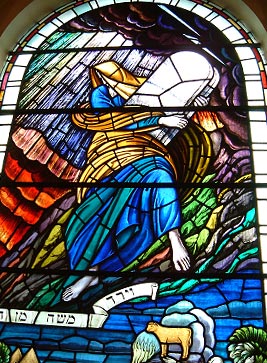
Early Evidence
Social Conditions
Contrasting Birmingham's Cultures
Early Evidence
How can we find out where and when the first Jewish migrants arrived in Birmingham?
The answer is difficult to determine exactly; but a number of historical sources help to cast a light on this early period of Birmingham’s history. A History of The Jewish Community of Birmingham (1956) by Harry Levine (himself a notable Birmingham Jew) argues that, ‘the generally agreed date of our first community is 1730’. If so, this date marks one of the earliest migrations of a religious community to Birmingham.
Backing up this statement, the ‘Birmingham Levy Book of 1749’ is one piece of evidence that shows a ‘house inhabited by Jews’. But why did Jews such as these come to Birmingham? One answer may be that the lure of work and religious freedom that Birmingham apparently offered were significant factors in the migration and settlement of Jewish people in the area. The 18th century town already contained many non-conformist religions (such as Quakers, Unitarians, Methodists) and was rapidly expanding its industries and businesses.
Further evidence of the 18th century Jewish settlement can be found in one of the earliest published accounts of this period: William Hutton’s A History of Birmingham (1780). According to Hutton, the first Jewish synagogue of Birmingham was settled in an area known as the ‘froggary’- a densely packed row of buildings in poor condition that would later be cleared for the development of New Street Station.
<return to top>
Social Conditions
These pieces of information suggest that, although there were some wealthier exceptions, many of the first Jewish migrants lived in working class areas or streets that would become notorious as slum districts. Here, poverty often reigned over an increasingly wide range of people starting to arrive in Birmingham.
Social conditions of migrants in Birmingham’s early history would be (as in some cases it continues to be) framed by poor living conditions, with fledgling communities grouped in the cheapest affordable housing. The earliest census (1841) already includes significant elements of the Irish, Italians and Eastern Europeans as well as individuals from Africa, India, the West Indies and elsewhere around the world. These joined the waves of migrants leaving the surrounding countryside to find work in towns.
The harsh conditions in which men women and children had to settle was all too often the reason why unfair negative prejudices formed against the ‘alien’, ‘dirty’, or ‘disrespectable’ newcomers. Usually barred from entry into public institutions, schools and businesses, the very first Jewish inhabitants of Birmingham were often ‘hawkers’ or commercial travellers, forced to earn a living as salesmen of cheaper goods.
Scattered among a handful of names in levy books, trade directories and early maps, the story of the early Jewish presence in Birmingham is one of slowly growing numbers who probably struggled to uphold their faith against poverty and prejudice. Nevertheless, it would be from this difficult foothold that the more rapidly expanding community of the 19th century would establish a significant presence in the town, building new synagogues, schools, shelters and theatres.
<return to top>
Contrasting Birmingham's Cultures
At the same time that it is important to mark how one distinct community (such as the Jewish) develops and interacts, we also need to recognise that we cannot study communities and cultures in isolation for one another.
Tracing the early history the Jewish community can also help us to understand how the experiences of ‘migration and settlement’ in Birmingham are often linked to shared spaces. So, for example, the area around the back of New Street, across Digbeth towards Hurst Street, that once contained the early Jewish community, and which has also played host to parts of the Irish experience, can now be seen inhabited by the ‘Chinese Quarter’.
One symbol of such a transformation of cultures and communities specific to one area can be found opposite the ‘Arcadian’ centre on Wrottesley Street. The building which is now occupied by the ‘Chung Ying’ restaurant was once a Jewish Synagogue, home to worshippers who broke away from the ‘Birmingham Hebrew Congregation’ in 1853.
<return to top>
Author: Dr Andrew Green
Main image: Photograph by Brigitte Winsor
|